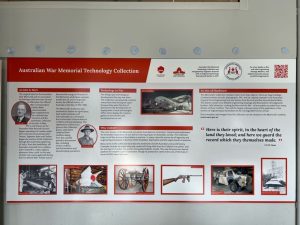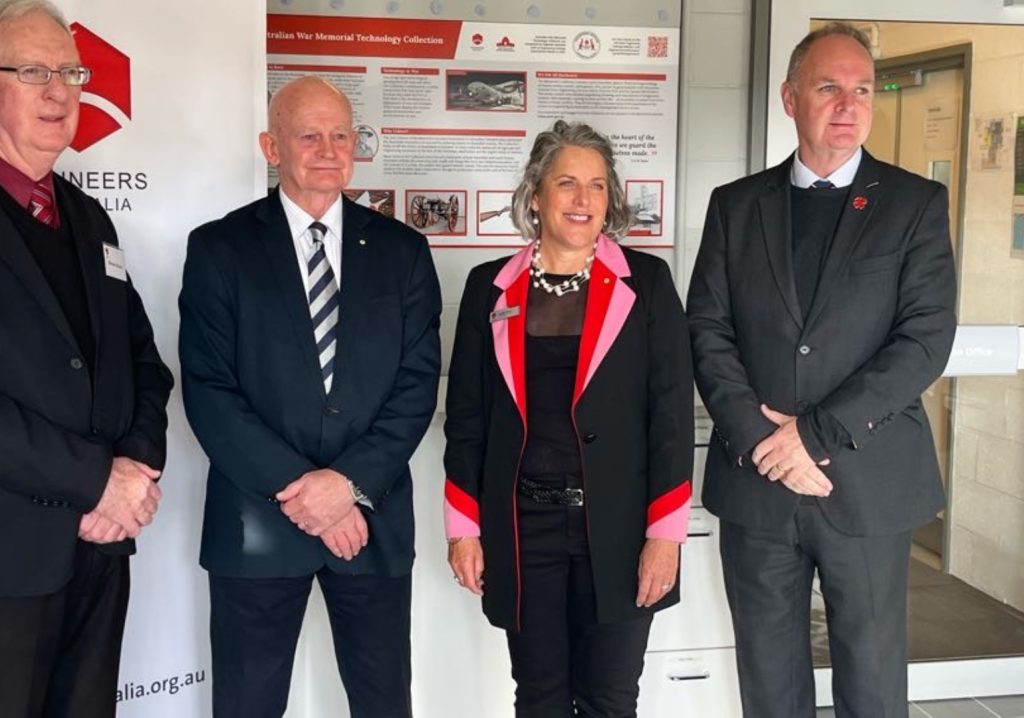From an Australian-designed and manufactured tank to a World War II-era, Royal Australian Air Force–developed device devised to confuse enemy radar systems, the tale of Australia’s military engineering history is told by the artifacts in the Australian War Memorial’s Technology Collection.
That story — and the archival preservation that allows it to be communicated to future generations — was celebrated last month at a ceremony in Canberra, when the Technology Collection was recognised by Engineering Heritage Australia with its prestigious Engineering Heritage International Marker.
Renowned for being one of the most comprehensive and well-documented collections of its kind in Australia, the Technology Collection highlights the immense importance of the Australian War Memorial’s technological contributions to the fields of science and engineering in times of both war and peace.

Held at the Treloar Resource Centre, the Australian War Memorial’s Canberra storage facility, the ceremony was attended by Engineers Australia CEO Romilly Madew and Engineering Heritage Australia Deputy Chair Richard Muncey, along with Director of the Australian War Memorial Matt Anderson and Assistant Director of the Australian War Memorial‘s National Collection Brian Dawson.
“I congratulate the Australian War Memorial for its efforts to bring together and conserve this extensive and important collection,” Muncey said in his address during the event.
“The Engineering Heritage Recognition Program focuses on Australian engineering endeavours but can recognise Australian engineering and industrial heritage stories which occur outside Australia.
“Such is the case in examples of our military engineering history today.”
Innovative designs
Following the ceremony, which recognised the Australian War Memorial’s dedication to preserving these artifacts and its commitment to preserving history and sharing it with the public, the attendees received a private tour of the facility.
Among the notable artifacts from the collection highlighted during the event were a cruiser tank, the AC Mark III Thunderbolt, that was designed and manufactured in Australia during World War II.
The tank’s innovative design featured single-unit castings for the main hull, forward transmission housing, turret and mantlet — the first time in the world such an approach had been taken.
The collection also hosts the Merryfull ‘Window’ dispenser, a device used by Allied bombers during World War II developed by Flight Lieutenant C.J. Merryfull of the RAAF.
This dispenser was used to blind and confuse German radar systems and one of the earliest of its type was used on Royal Air Force aircraft.
Rare rocketry
The scope of the Australian War Memorial’s collection extends beyond Australian technological advancements to include items used against Australian forces in operations, making them integral to the nation’s military history.
This includes an almost intact German A-4 (V-2) rocket and transport wagon — one of only 18 remaining worldwide. This was the world’s first ever operational long-range ballistic missile and a ground-breaking advancement in rocket propulsion that paved the way for space exploration.
The transport wagon, known as a Meiller-wagen, was used to move and erect the rocket, and is one of just three left in the world.
The collection also includes photographs, film and written records that help tell the story of the engineering activities of Australians at war, such as Australian Imperial Force Engineering Unit war diaries from World War I.
These feature detailed engineering drawings and descriptions of bridgework, bunkers, field obstacles and cooking facilities, and help convey how engineers applied their profession during the war as well as their hardships of living and fighting during the war.
“Engineers Australia established the Australian Historic Engineering Plaquing Program in 1984 as a means of bringing public recognition to engineering items of historic or heritage significance and to the engineers who created them,” Muncey said.
“Engineering heritage is also about the people who built Australia, in both civil and military works. Their stories are critical to a full understanding of the inanimate objects — and the resulting social benefit — which are the product of their engineering activity.”
Attendees were united in their admiration of the centre.
“What a privilege to represent Engineers Australia at the unveiling of the Australian War Memorial Engineering Heritage Recognition Panel at their Treloar Technology Centre,” Madew said.
“A special thanks to David Pearson, Senior Curator, AWM for taking us for a tour, a walking AWM collection encyclopaedia.”
